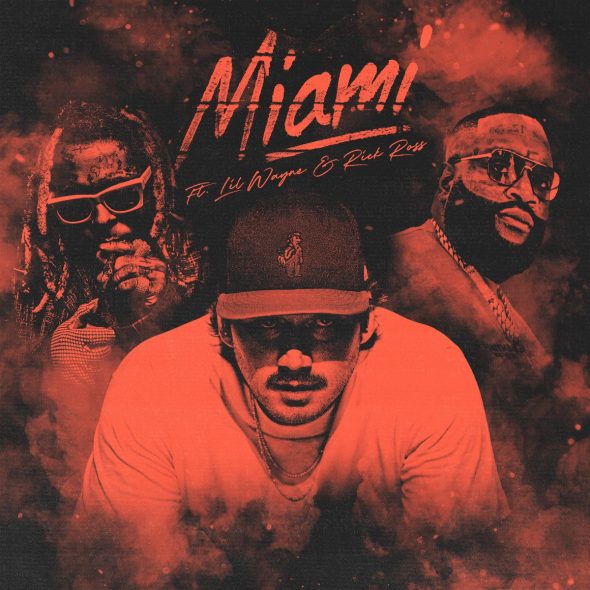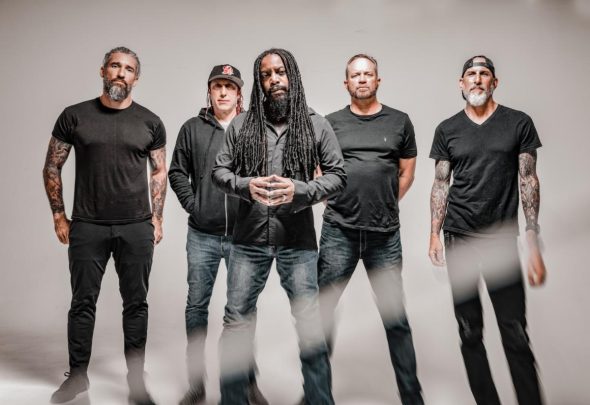Setting the Tone
Eric Johnson has been called everything from a prodigy and perfectionist to the “King of Tone.” He’s played and recorded with some of the biggest names in popular music — Cat Stevens, Carole King, Steve Miller, Dweezil Zappa and Sonny Landreth, to name just a few.
Coming from humble, middle-class beginnings in Austin, Texas, a town as renowned as Nashville for its legendary pool of musical talent, Johnson has never really left. He lives, writes and records in Austin. Austin is in his blood. His first taste of success came in the mid-70s with The Electromagnets, a minor fusion group that garnered a regional following and released two albums. Despite their regional popularity and modest touring success, they disbanded in 1977 after the band’s recordings failed to attract the attention of any major record labels.
After the Electromagnets split, Johnson assembled a power trio with Kyle Brock on bass and Bill Maddox on drums, calling it the Eric Johnson Group. His first major television appearance was on PBS’ “Austin City Limits” in 1984, and it was a groundbreaking performance for Johnson and his brand of guitar music.
Johnson recorded his first full-length album, titled “Seven Worlds,” at Odyssey Studios in Austin. Although the album highlighted Eric’s signature sound, legal disputes unfortunately held up the album’s release for several years. “Seven Worlds” was finally released in 1998 on Ark21 Records. Being that he was unable to ink a new management contract, Johnson began performing as a session guitarist for some well-known acts, such as Christopher Cross, Carole King and Cat Stevens.
Johnson’s next album, “Tones,” was released in 1986 on Warner Brothers Records and set the tone (pardon the pun) for things to come, with a Grammy nomination for Best Rock Instrumental Performance for the track “Zap,” which grabbed some much-desired attention for his work. Although the album received critical acclaim, sales were mediocre, and Warner Brothers allowed his recording contract to expire.
It wasn’t until the 1990 release of his defining album, “Ah Via Musicom,” that Johnson finally achieved the critical and commercial success that he had been seeking. The album’s second track, “Cliffs of Dover,” demonstrates his masterful, signature sound and won Johnson a Grammy Award for Best Rock Instrumental Performance in 1991. “Ah Via Musicom” was Johnson’s first album to be a certified platinum seller, and although none of his subsequent releases has matched its commercial success, Johnson has continued to increase his musical following and his reputation as a consummate guitarist, with a perfectionist’s bent.
I recently sat down to talk with the soft-spoken Johnson about his musical beginnings in Austin, his beloved hometown. We also discussed his earliest musical influences and his thoughts on what characteristics and habits make for a successful session artist. We also delved into how he developed his signature guitar tone, the gear he uses and his new live album coming out this month.
Brian McKinny: When did you start playing guitar, and was guitar your first instrument?
Eric Johnson: I started playing guitar when I was 11, but it wasn’t my first instrument. I started taking piano lessons a few years before I picked up the guitar. My folks bought me a Fender Musicmaster student model that I had seen in a local music store. I was lucky enough to be able to talk them into buying it for me. From that point on, I really was hooked.
McKinny: What was it that inspired you to take up playing the guitar?
Johnson: I remember listening to the Ventures when I was a kid. Nokie Edwards had such a great sound and I loved his style. It was all new music back then when I was growing up, and it just really grabbed my ear. Later on, I got into the sounds of guys like Jimi Hendrix, Brian Jones, Jeff Beck (when he was in The Yardbirds) and Eric Clapton too. I spent a couple of years just emulating Clapton, playing every single note he played with Cream. They were all big influences on me then, and they still are today.
McKinny: What was Austin like musically, when you were growing up there?
Johnson: Austin is much more known worldwide now than it was back when I was a kid, but I remember when I was growing up, there was always so much music going on — all types of music. You could go out and hear anything being played — country, blues, rock and jazz. You name it! In fact, I remember the first time I went to LA, I thought, “God! Austin had more live music going on than they do in LA!” Austin’s always been a sort of melting pot of musical styles, and it still is a great place for music today, which is why I love it.
McKinny: Do you remember the first gig you ever played?
Johnson: Oh, yeah, it was in a club called the Eleventh Door in Austin, and I was only 13 years old at the time. I was in this little Top-40 party band called the Sounds of Life. We did all sorts of stuff — everything from The Beatles to Wilson Pickett, and everything in between. We had such a great first gig, and I had so much fun that we ended up playing together doing parties and dances for the next couple of years or so. It was right about then that I decided that this was what I wanted to do for a living.
McKinny: You have mastered so many different musical styles — rock, blues, jazz, R&B-inspired music, classical, new age and country. Which is it that you return to when it’s just you and your guitar, playing for your own enjoyment?
Johnson: I really enjoy all those styles you mentioned, and more. But I think that when it’s just me and my guitar, just relaxing and playing for myself, it’s country music — classic country like Hank Williams Sr. or Chet Atkins. That’s the stuff that I tend to play when it’s just me sitting around, picking the guitar.
McKinny: Between the Eric Johnson Group and your striking out on your own as purely a solo artist, you worked as a session player with such notable artists as Cat Stevens, Carole King and Christopher Cross, to name a few. Did you enjoy working as a session player, and what advice would you give someone getting into session work for the first time?
Johnson: Yeah, I really enjoyed doing the session work. It was a great opportunity to get to work with a lot of different artists and musicians, as well as playing a lot of different musical styles. Being a session player really helped me to get comfortable with all kinds of different playing and recording situations, as well as working with lots of different personalities and expectations.
As for advice, I’d say that the two things you should always strive for are being as prepared as you can be — KNOW your part. When you walk into the studio, you should be comfortable with your part and have it down solid. Be prepared to improvise too. Be flexible, and a good listener. The other thing I think is important to session work is simple: Be on time. Studio time costs money, and you don’t want to be the one that everyone is waiting on to show up. Other important things are to make sure that your gear is ready and in good working condition. It’s not only embarrassing when something breaks down, but also time-consuming to search out the problem and then try to repair it. Stuff happens that you can’t control sometimes, but by maintaining your equipment well, you’ll avoid these things happening.
McKinny: Who were some of the more enjoyable people you’ve done session work with on their recordings?
Johnson: Oh, I really enjoyed almost all of the session work that I did, to be honest. But the ones that stand out in my mind are Steve Miller and Jimmy Vaughn. Those were some guys to work with.
McKinny: You’re renowned for being a perfectionist in the studio. Do you consider that an asset or a hindrance? Perhaps it’s a little of both?
Johnson: When I was younger, I’d have told you it was an asset, but over the years, I’ve come to see it as a bit of both. Sometimes it’s easy to become caught up in the quest for the perfect tone, or the perfect arrangement, or even the perfect mix. But through the years of experience, and some mellowing, I guess, I’ve become more content with my sound and am less the uncompromising perfectionist of my younger days.
McKinny: Let’s talk about your tone for a minute. What does tone mean to you as a guitarist? Is it all about tone, and is there a difference in tonality that you are looking for today in your music that you couldn’t get in the past?
Johnson: Just listen to all those old blues artists’ records — B.B. and Albert King or Eric Clapton and what he did with his sound. People like Wes Montgomery and his beautiful jazz tones. It’s about sounds that entice the ear. They make you take notice and want to hear more, drawing you in as the tone colors the notes with whatever emotion they evoke in you from listening to the sound of the music. I’ve managed to hone my own sound a bit, beginning with a clear, crisp rhythm. For my distorted tone, I like it to sound very natural and kind of “woody.” Tone, with any guitarist, is something that is constantly evolving, because I’m always trying to find the right sounds and new ways of expressing the music.
McKinny: Is there anything “special” about your own rig that you could tell us?
Johnson: No, not really. It’s more basic than most people probably think. I use a couple of old Fender Twin Reverbs for my clean tone, and I use a couple of old Marshalls for lead and crunch rhythm. And then there’s just (Dallas-Arbiter Fuzz Face) fuzz tone and a (BK Butler) tube driver, a (Vox CryBaby) wah-wah and a (MXR KD IV) chorus. That’s the basics of it, really. Most of the amps and cabinets I use are vintage stuff. There’s always a variety of different guitars and stuff, but it’s mostly stayed the same for quite a while.
McKinny: Everyone knows you’re a big Fender Stratocaster aficionado, having played them as your main instrument for years. But I know that you’re also a big fan of Gibson guitars, especially the ES-335 and the Les Paul as well. Tell me about your taste for Gibson guitars.
Johnson: Yeah, well I love my 335s! I got my first ES-335 when I was 12 years old, and I just fell in love with it. I like them because they have that great Gibson lead tone, but being a hollow-body guitar, it kind of breathes with you as you play it. It’s always been a “go to” instrument for me when I’m cutting lead tracks in the studio. “Cliffs of Dover” was actually recorded with a 335, and everyone thinks it was my Strat or some other guitar, but it wasn’t.
McKinny: There have been rumors of your recording an all-acoustic album. Is there any truth to the rumors?
Johnson: Yeah, I actually did record one several years ago — about six or seven years ago now. I had decided that when I started it, that contrary to the way I normally make records, I was just going to go into the studio and record it all live, just sing it and play it. It really gives things a nice vibe. I’m trying to get away from all the playing and recording things repeatedly, be less heady about it, to let things have more of a live performance feel to them. The reason being because several people would say, “We really like what you do, Eric, but you need to become more ‘live,’ like you sound in your live performances. So I tried that on the acoustic album, and about half of it sounded pretty good, but the other half kinda sucked. But yeah, I would love to do another all-acoustic album sometime in the future. And this time, actually get it right and release it.
McKinny: Tell me about your new live album that is coming out this month. Where in Europe was it recorded, and what songs can we expect to hear? Did you include any new stuff on it?
Johnson: We recorded the album on my last tour of Europe, mainly in Amsterdam, at the Melkweg Concert Hall, but some of the songs were recorded in Germany (at Die Kantine) in Cologne and Bochum and in Paris at the New Morning. I enjoy touring, but touring Europe is extra-enjoyable. It’s just so beautiful there, and the fans are great, as they are here in the U.S. The fun thing about these shows was every night the sets would change — no two shows were the same songs, so it really helped to keep the shows and the vibe fresh and fun.
This new live album has 14 tracks, and I think it’s the best live album I’ve done. It includes a couple of new songs as well. The first is called “Intro,” and it opens the set. The other new song is called “Evinrude Fever,” and I wrote it because I really love boats and water skiing. There are a few surprises on the new album, too, that I think the fans will enjoy.
Johnson will follow up “Europe Live” with an album he recorded with friend and jazz guitarist Mike Stern. He is also composing and recording tracks for both a new electric album and his first acoustic guitar release, so look for news on those upcoming releases as well.
For more information, visit www.ericjohnson.com.




